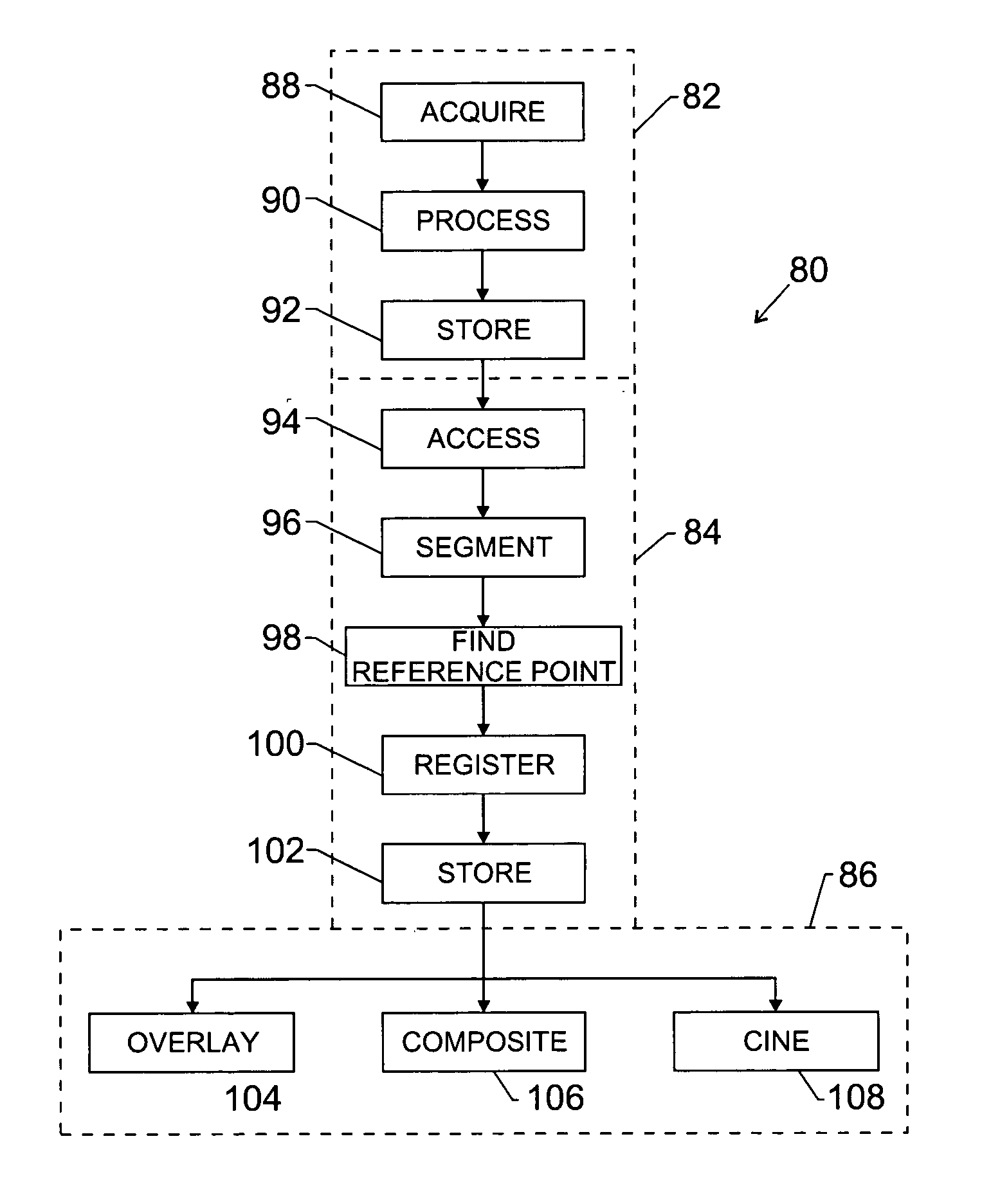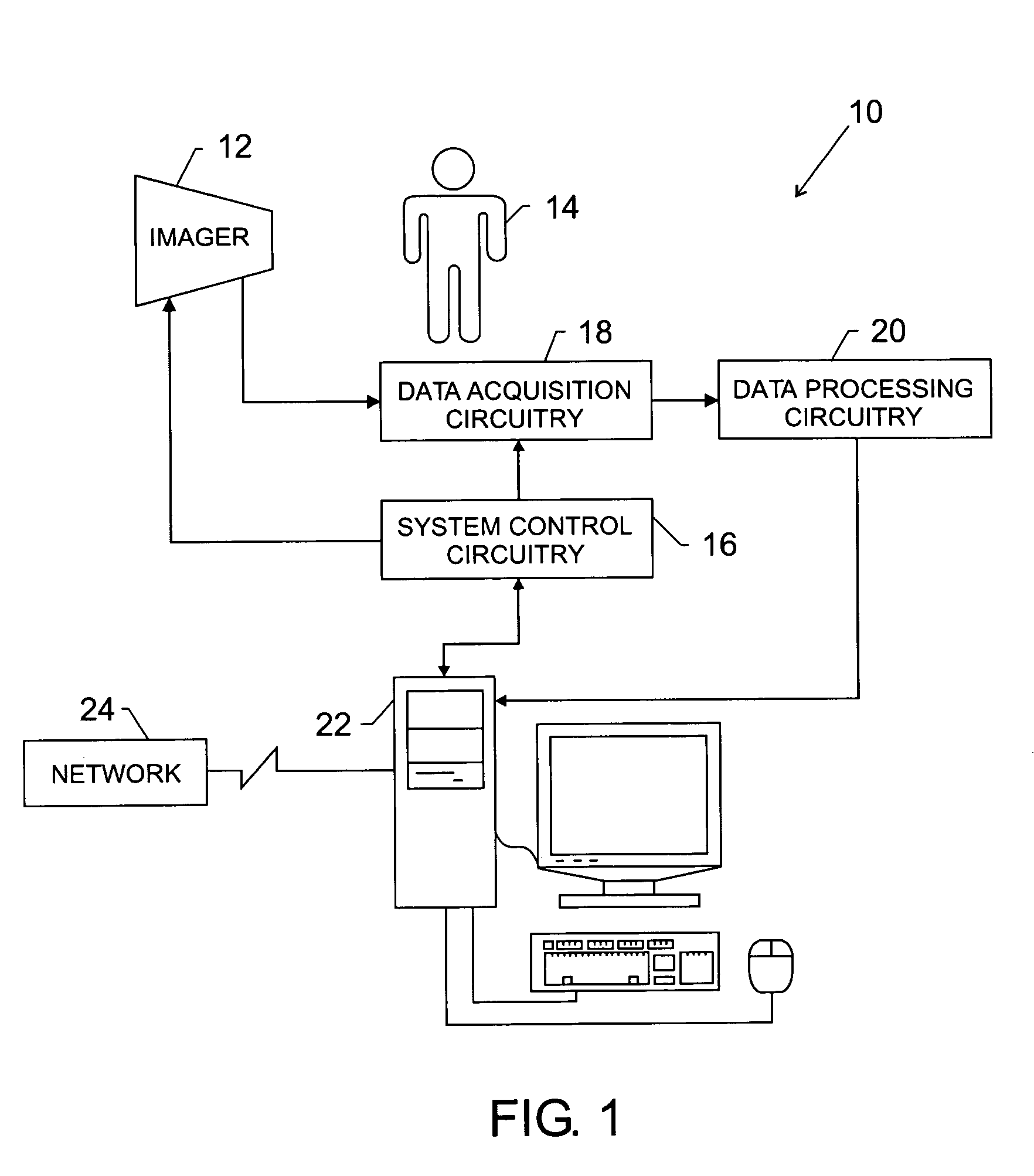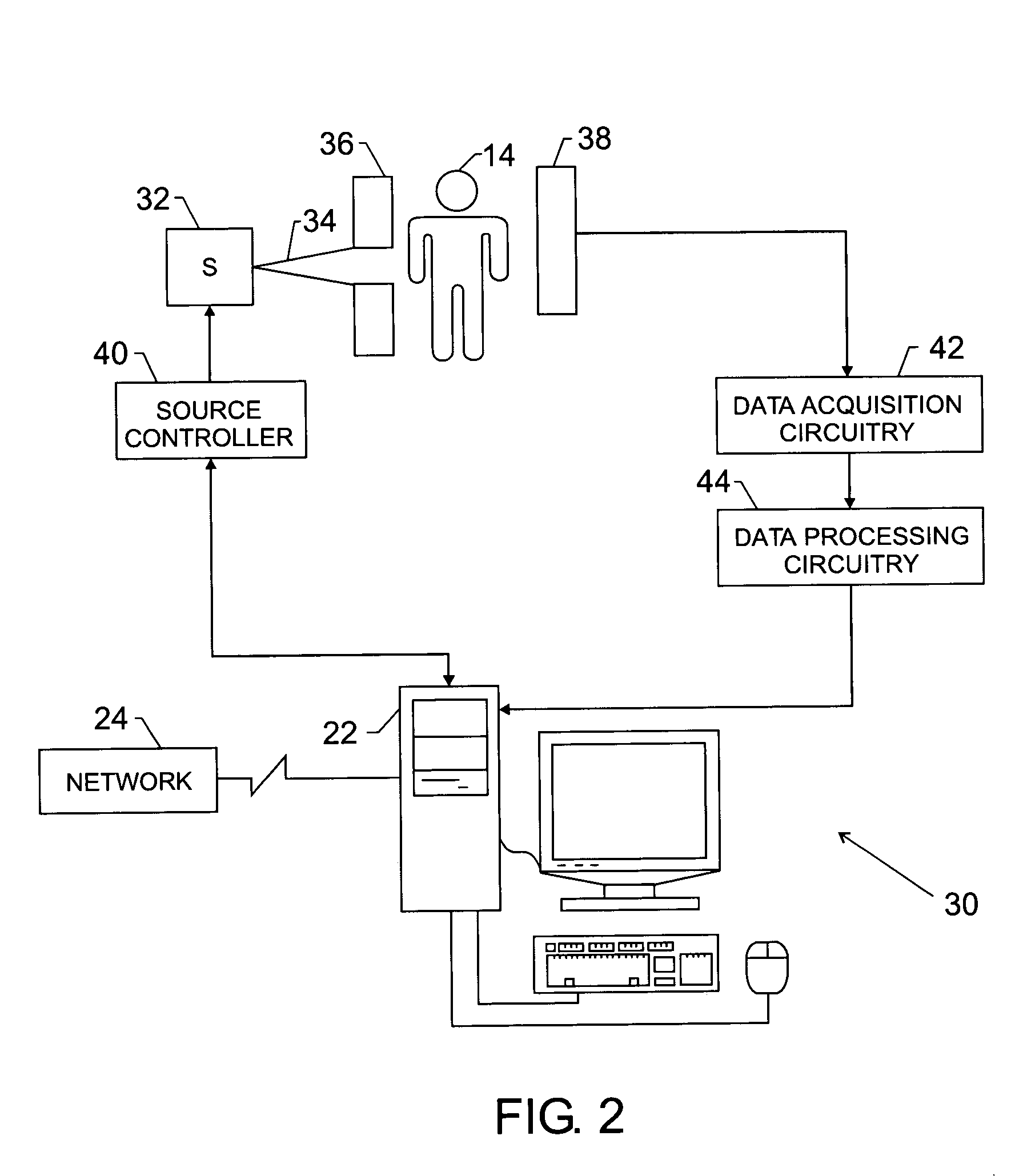Auto-image alignment system and method based on identified anomalies
a technology of auto-image alignment and anomalies, applied in the field of image analysis systems, can solve problems such as unoptimized, and achieve the effects of effective anchoring images, reducing eye movement, and facilitating paging
- Summary
- Abstract
- Description
- Claims
- Application Information
AI Technical Summary
Benefits of technology
Problems solved by technology
Method used
Image
Examples
Embodiment Construction
[0022] The present technique facilitates comparison of digital images acquired at different times. A clinician may analyze a time series of medical images for the presence of one or more indicia of medical pathologies such as nodules, lesions, fractures, microcalcifications, and the like. In general, the clinician may focus on one or more features such as an anomaly within the images and how those features change over time. Of course, certain imaging modalities may be better suited for detecting different types of features.
[0023] Imaging modality resources may be available for analyzing features and specific anatomies, as well as, for diagnosing medical events and conditions in both soft and hard tissue. Such medical imaging resources or systems may include modalities such as X-ray, Computed Tomography (CT), Magnetic Resonance Imaging (MRI), Positron Emission Tomography (PET), thermoacoustic imaging, optical imaging, nuclear medicine-based imaging, and so forth. Throughout the disc...
PUM
 Login to View More
Login to View More Abstract
Description
Claims
Application Information
 Login to View More
Login to View More - R&D
- Intellectual Property
- Life Sciences
- Materials
- Tech Scout
- Unparalleled Data Quality
- Higher Quality Content
- 60% Fewer Hallucinations
Browse by: Latest US Patents, China's latest patents, Technical Efficacy Thesaurus, Application Domain, Technology Topic, Popular Technical Reports.
© 2025 PatSnap. All rights reserved.Legal|Privacy policy|Modern Slavery Act Transparency Statement|Sitemap|About US| Contact US: help@patsnap.com



